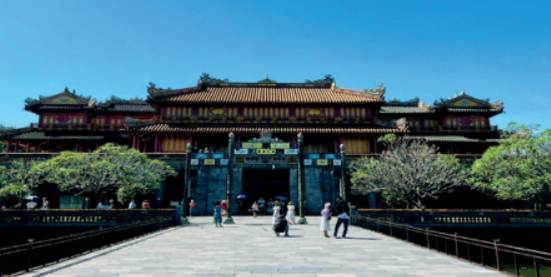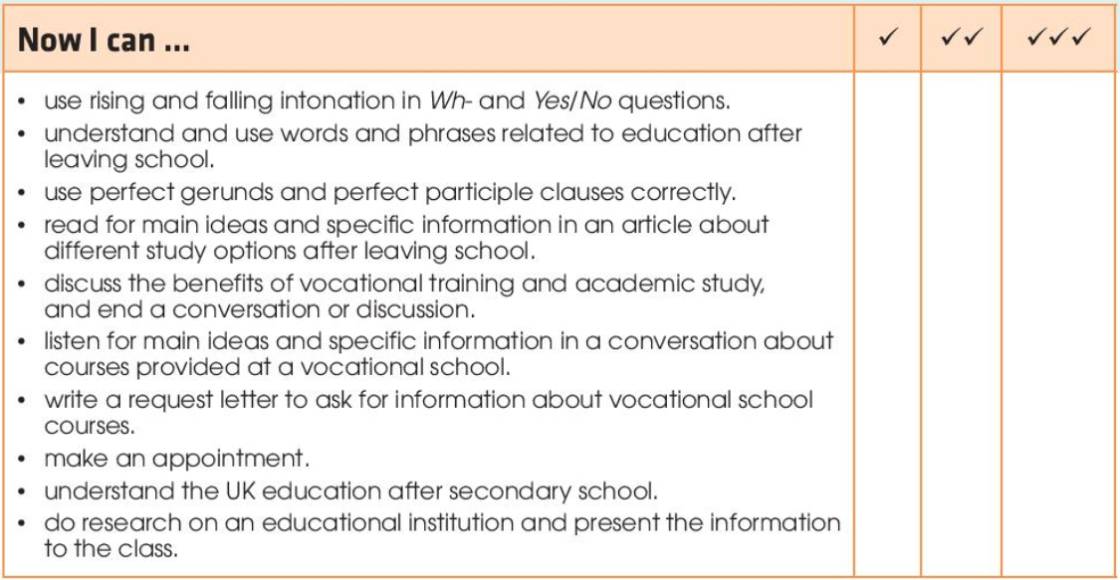Hãy nhập câu hỏi của bạn vào đây, nếu là tài khoản VIP, bạn sẽ được ưu tiên trả lời.

There have been efforts in Vietnam to protect and restore ecosystems, such as the Green Annamites Project, which aims to protect the forest ecosystem and biodiversity in the Annamites mountain range. In addition, there are initiatives to restore mangrove forests in the Mekong Delta and protect coral reefs in Nha Trang Bay.
Regarding the applicability of the ideas in the text to Vietnam, it depends on the specific context and conditions in Vietnam. The Great Green Wall project, for example, is focused on restoring degraded land in Africa, which may not be directly applicable to Vietnam. However, the idea of ecosystem restoration and protection is relevant to any country, and the principles and strategies used in these projects could be adapted and applied to Vietnam's unique ecological challenges. For example, efforts to protect and restore marine ecosystems like the Belize Barrier Reef could be relevant to Vietnam's extensive coastal areas and rich marine biodiversity. Overall, it would require careful consideration and adaptation to make these ideas applicable to Vietnam.
Tạm dịch:
Việt Nam đã có những nỗ lực bảo vệ và phục hồi các hệ sinh thái, chẳng hạn như Dự án Trường Sơn Xanh nhằm bảo vệ hệ sinh thái rừng và đa dạng sinh học ở dãy Trường Sơn. Ngoài ra, còn có các sáng kiến khôi phục rừng ngập mặn ở ĐBSCL và bảo vệ rạn san hô ở vịnh Nha Trang.
Về khả năng áp dụng các ý trong văn bản vào Việt Nam thì tùy thuộc vào bối cảnh và điều kiện cụ thể ở Việt Nam. Ví dụ, dự án Bức tường xanh vĩ đại tập trung vào việc khôi phục đất bị suy thoái ở Châu Phi, điều này có thể không áp dụng trực tiếp cho Việt Nam. Tuy nhiên, ý tưởng phục hồi và bảo vệ hệ sinh thái phù hợp với bất kỳ quốc gia nào, và các nguyên tắc cũng như chiến lược được sử dụng trong các dự án này có thể được điều chỉnh và áp dụng cho các thách thức sinh thái đặc thù của Việt Nam. Ví dụ, những nỗ lực bảo vệ và phục hồi các hệ sinh thái biển như Rạn san hô Chắn bờ Belize có thể phù hợp với các vùng ven biển rộng lớn và đa dạng sinh học biển phong phú của Việt Nam. Nhìn chung, cần phải xem xét và điều chỉnh cẩn thận để những ý tưởng này có thể áp dụng cho Việt Nam.

Tham khảo:
There are several farming activities in Vietnam that can have a negative impact on the global temperature, including:
1. Rice cultivation: Rice cultivation is a major source of greenhouse gas emissions, primarily due to the production of methane during the decomposition of organic matter in flooded rice paddies.
2. Livestock production: Livestock production, particularly from cattle and buffalo, is a significant contributor to greenhouse gas emissions through the production of methane from enteric fermentation and manure management.
3. Pesticide use: Pesticide use in agriculture can lead to the emission of greenhouse gases, particularly nitrous oxide, as well as contribute to soil degradation.
4. Deforestation: Deforestation for agriculture, particularly for expanding rice paddies or livestock grazing areas, can contribute to the release of carbon dioxide into the atmosphere.
To address these negative impacts, some alternatives that can be considered include:
1. Sustainable rice cultivation: Alternative rice cultivation methods, such as aerobic rice cultivation or the use of alternate wetting and drying methods, can significantly reduce methane emissions from rice paddies.
2. Improved livestock management: Improved livestock management practices, such as better feeding and manure management, can reduce the emissions of methane and other greenhouse gases.
3. Organic farming: Organic farming practices, including the use of natural pest control methods and composting, can reduce the use of pesticides and fertilizers, as well as promote soil health.
4. Forest conservation and reforestation: Conservation and reforestation efforts can help to reduce the release of carbon dioxide from deforestation and promote carbon sequestration in new forest areas.
Overall, a shift towards sustainable agriculture practices and land use management can help to mitigate the negative impacts of farming activities on the global temperature.

A list of characteristics of independent learners for discussion purposes:
Self-motivated: Independent learners are motivated by their own interests and goals, not just external rewards or pressures.
Self-directed: They take responsibility for their own learning and actively seek out resources and opportunities to improve their knowledge and skills.
Self-aware: They understand their own strengths and weaknesses, learning style, and preferences, and use that knowledge to guide their learning process.
Goal-oriented: They set clear and specific learning goals and regularly assess their progress toward achieving them.
Persistent: They persevere through challenges and setbacks and keep working toward their goals.
Reflective: They regularly reflect on their learning experiences and use that feedback to improve their learning strategies.
Resourceful: They know how to find and use a variety of learning resources, including books, online courses, mentors, and peers.
Curious: They have a strong desire to learn and explore new ideas and topics.
Creative: They think outside the box and find innovative ways to solve problems and achieve their goals.
Collaborative: They work well with others and are open to learning from different perspectives and experiences.

1. I haven’ visited any castles or palaces in VietNam before. However, I know some of the most famous ones such as Hue Imperial Citadel, the Thang Long Imperial Citadel, and the Ho Dynasty Citadel. These historical sites are significant because they showcase the country's rich history and cultural heritage.
(Tôi chưa từng đến thăm bất kỳ lâu đài hay cung điện nào ở Việt Nam trước đây. Tuy nhiên, tôi biết một số địa điểm nổi tiếng nhất như Cố đô Huế, Hoàng thành Thăng Long và Thành nhà Hồ. Những di tích lịch sử này rất có ý nghĩa vì chúng thể hiện di sản văn hóa và lịch sử phong phú của đất nước.)
2. I haven’t seen this palace before, but I guess it is the Hue Imperial Citadel.
(Tôi chưa nhìn thấy cung điện này bao giờ, nhưng tôi đoán đó là Hoàng thành Huế.)

Tham khảo:
Turning methane emissions from cows into energy: This technology can definitely be used in Vietnam as the country has a large population of cows, which results in the emission of a significant amount of methane. With this technology, the methane gas can be captured and converted into biogas or electricity, which can be used to power households and industries. By using this technology, we can reduce the release of methane into the atmosphere, which is a potent greenhouse gas, and help slow down global warming.
Growing plants in the ocean: Growing plants in the ocean, also known as ocean farming, can be a feasible technology for Vietnam, given its long coastline. This method involves growing various types of seaweed and other marine plants to help absorb carbon dioxide from the atmosphere. Additionally, these plants can be used as a source of food, biofuel, and other products. By growing these plants, we can reduce the amount of carbon dioxide in the atmosphere and help mitigate climate change.
Keeping CO2 in storage sites: Carbon capture and storage (CCS) technology can be a useful method to reduce carbon dioxide emissions in Vietnam, particularly in the industrial sector. However, there are some challenges with the implementation of CCS technology, such as the lack of suitable storage sites and the high cost of capturing and storing CO2. Nevertheless, if properly implemented, this technology can help reduce CO2 emissions, thereby mitigating climate change.

1. Founded in 1906, the Vietnam National University, Hanoi is a non-profit public higher education institution located in the urban setting of the large metropolis of Hanoi. It is a medium-sized coeducational Vietnamese higher education institution.
2. Vietnam National University, Hanoi (VNU) offers courses and programs leading to officially recognized higher education degrees such as bachelor's degrees, master's degrees and doctorate degrees in several areas of study.
3. VNU also provides several academic and non-academic facilities and services to students including a library, study abroad and exchange programs, as well as administrative services. the cost of yearly tuition can vary widely depending on the Vietnam National University, Hanoi's program of study, the specific type of degree, the student's residency status and other criteria. Moreover, tuition is just one component of the overall cost of attending university. Other expenses, such as room and board, textbooks and personal expenses can add significantly to the total cost of attendance and depends on Vietnam's cost of living.
4. The acceptance rate range is 20-29% making this Vietnamese higher education organization a very selective institution.

Tham khảo:
There are similarities between the problems facing teens in many countries, including Vietnam. Cyberbullying, academic pressure, social pressure, mental health issues, substance abuse, and poverty are some of the issues that Vietnamese teens may face.
In addition to the problems mentioned in the text, there may be other problems among teenagers in Vietnam. For example, issues related to family relationships, dating and sexuality, career choices, and cultural conflicts are also common. It is important for parents, educators, and society as a whole to pay attention to the needs of teenagers and provide them with adequate support and resources to help them navigate these challenges.

Similarities:
- Both countries offer vocational education as an alternative to traditional academic education after secondary school.
- In both countries, students can continue their education after secondary school to obtain a bachelor's degree, master's degree, or a doctorate.
- In both countries, grades are important for further education, with students needing to achieve good grades to progress to higher levels of education.
Differences:
- In Vietnam, there is a strong emphasis on academic education, with vocational education being seen as a secondary option. In contrast, vocational education is given more importance in the UK and is often referred to as career education or technical education.
- In the UK, students have the option of attending sixth-form colleges or staying at their secondary schools for two more years to study subjects they are interested in or subjects related to higher education. Such an option is not available in Vietnam.
- The education system in Vietnam is heavily influenced by the government and is more centralized, while the UK education system is more decentralized and allows for greater autonomy in decision-making by schools and teachers.
- The length of time spent in university in Vietnam is longer compared to the UK. In Vietnam, a bachelor's degree can take up to five years to complete, while in the UK, it takes three years.
These are just a few examples of the similarities and differences between the education systems in Vietnam and the UK. Students in the group discussion can explore these points in more detail and also add their own observations and experiences to the discussion.


Vietnam has several methods of preserving heritage. One of the most common methods is through government funding. The government invests money in preserving heritage sites and objects, and it has been successful in many cases. Another way is through public-private partnerships, where companies provide funding for heritage preservation in exchange for advertising or other benefits.
Vietnam has also used UNESCO funding for the preservation of its cultural heritage. Additionally, the country has implemented strict heritage laws to protect its heritage sites and objects. For example, in 2016, Vietnam passed a law on cultural heritage, which regulates the protection, preservation, and promotion of the country's heritage.
As for which method works best in Vietnam, it depends on the specific context and situation. Each method has its advantages and disadvantages, and a combination of different methods may be the most effective way to preserve heritage in Vietnam.